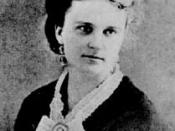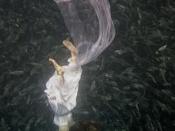Kate Chopin's story, 'The Awakening', throws echoes back on a time when women were imprisoned by societal expectations as in a glass cage. Often women would be unaware of the fact that they were not free in the true sense of the word, or if they were aware, they were not sufficiently conscious enough to wish to break free and risk disapproval. This was the time that Chopin lived in, and her work can only mean that she as a writer became aware, fully aware of the female predicament in 19th century society.
Edna's awakening can also be seen as her rebirth; throughout the book the sea, symbolic of sensuality and sexuality, calls her, and this links to the birth of Aphrodite, goddess of sexual love, who was born in the sea. Aphrodite could be seen as the personification of feminine freedom, able to bestow her affections and to be a sensual creature without the limitations imposed by men.
Indeed, the first time that the reader encounters Edna, in Chapter 1, she has just returned from a swim in the sea.
Her marital situation is observable through her interaction with her husband; it is possible to see that the relationship, at least on her side, is not a particularly loving one. The pair seem more accustomed to one another than anything else; Leonce Pontellier, Edna's husband, regarding her 'as one looks at a valuable piece of personal property.'
Chopin makes Edna's awakening all the more discernible to the reader by first establishing the restrictions of Edna's societal position. She is used to her husband sometimes not coming home for dinner, because 'it all depended upon the company which she found over at Klein's and the size of 'the game.' It is easily evident that Edna sees little...


